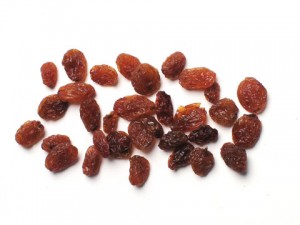 Yesterday while grocery shopping, I bought a box of succulent strawberries. They were bright red, plump and had deep green “mustaches” that weren’t too big. Tonight, after thinking about those berries all day, I fixed myself a generous bowl-full.
Yesterday while grocery shopping, I bought a box of succulent strawberries. They were bright red, plump and had deep green “mustaches” that weren’t too big. Tonight, after thinking about those berries all day, I fixed myself a generous bowl-full.
As I cut them up, I wondered how they could travel from sunny Florida to snowy Michigan and look like they’d been picked an hour ago. And then I took my first bite. The berries were sour and nearly tasteless, nothing like what they appeared to be. Even a spoonful of sugar didn’t make them go down very well.
It comes naturally to trust in what we see. Eating sour strawberries has no moral consequence, but the principle of believing that everything we see is reliably true can have devastating results. So how do we know what to do?
We need a measuring stick by which to evaluate the choices we make. I think of Nate and his fatal cancer. Although his health declined radically each day, he never once panicked over his approaching death. He was nervous about his escalating pain but made the choice not to question God’s plan for his life, and death.
I find this extraordinary, but his peaceful demeanor wasn’t just an accident. It was the byproduct of a belief in the truth. He put his terminal prognosis next to the measuring rod of what God said, which was that he’d still be alive after he died physically, and that life would be good.
As we get closer to the Easter season, I’ve been thinking about the famous conversation between Jesus and Pilate shortly before Jesus was killed. Pilate, trying to figure out what the Jewish leaders were so upset about, sought clarification from Jesus. The conversation went something like this:
Pilate: Are you the king of the Jews?
Jesus: Is that what you think?
Pilate: I can’t think like a Jew.
Jesus: My kingdom is not of this world.
Pilate: So you are a king, then?
Jesus: I was born to testify to the truth.
Pilate: But what is truth?
Just when Pilate was about to get the answer to that critical question, he terminated the conversation, giving the order to kill Jesus. If Pilate had been listening to Jesus’ teachings during preceding months, he would have heard him answer that last question with the words, “I am… the truth.” (John 14:6)
And that’s where the buck stops. Right at Jesus. Nate believed in something, in someone, he couldn’t see, and that knowledge of unshakeable truth gave him a peace unexplainable by human standards. It wasn’t, “Maybe I’ll be ok after I die,” or “I sure hope I’ll be ok.” It was, “I know for sure I’ll be ok.”
Listening to Jesus and living according to biblical truth isn’t easy and almost always goes contrary to our natural instincts, but if we do it, the end-result will be even sweeter than a bowl of perfect strawberries.
“Jesus answered, ‘Everyone on the side of truth listens to me’.” (John 18:37b)




